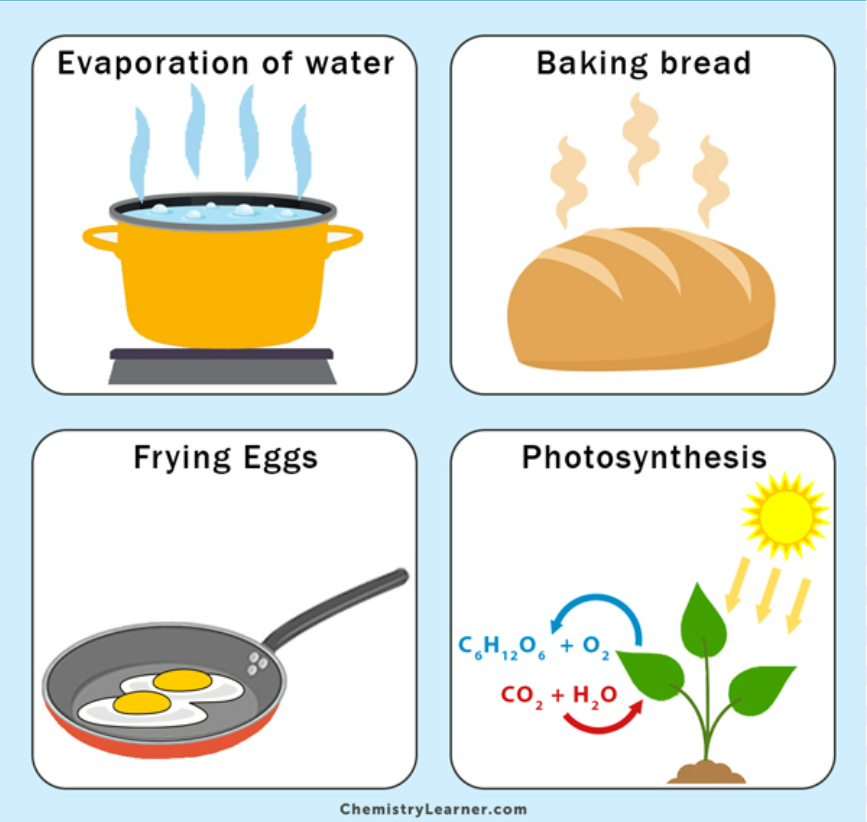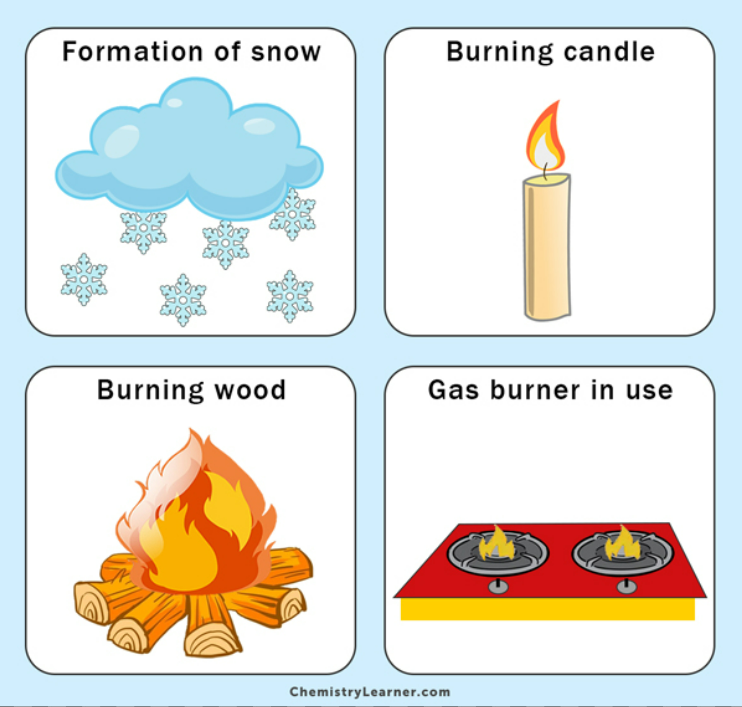No new substances are formed.
Physically change.
Examples: water for cooling, ice melting, haircut, freezing, boiling
New substances are formed.
Has different properties/
Chemical bonds are formed/broken.
Examples: carbohydrates→glucose, glucose→starch, egg frying, dying hair, burning
Chemical change - reaction
Physical change - process

Chemical reaction or process in which energy is absorbed/taken in.
During an endothermic reaction or process, the temperature decreases.
Reactant’s energy level is lower than the product’s energy level.
Examples:
Photosynthesis - endothermic reaction
Frying/boiling egg - endothermic reaction
melting/boiling - endothermic process
→ Metal carbonate + acid → salt + water + carbon dioxide [Sherbet sweets]
- Sodium hydrogen carbonate + citric acid → sodium nitrate + water + carbon dioxide
- A mixture of citric acid and Sodium hydrogen carbonate
- They dissolve in the water in saliva and start to react.
- CO2 is released → gives a ‘fizzy’ feeling.
Ammonium nitrate + water [ice packs]
Potassium chloride + water

Chemical reaction or process in which energy is given out.
During an endothermic reaction or process, the temperature increases.
Reactant’s energy level is higher than the product’s energy level.
Examples:
- Cellular respiration - exothermic reaction
[C6H12O6 + 6O2 → 6CO2 + 6H2O + energy]
- Condensation/freezing - exothermic process
- Burning/combustion - exothermic reaction process
A substance that combines with oxygen is called fuel.
Fuel is a store of chemical potential energy.
When something burns, CPE inside → light/heat/sound energy.
- Any reaction where a substance combines with oxygen
- Every burning is an oxidation reaction.
- Not all oxidation reaction is burning.
Example: Rusting is an oxidation reaction. [very slow exothermic reaction]
1. Burning/combustion
→ Metal + oxygen → metal oxide
2Mg + O2 → 2MgO
→ Non-metal + oxygen → non-metal oxide
C + O2 → CO2
2H2 + O2 → 2H2O
2. Metal + water → metal hydroxide + hydrogen
→ Sodium + water → Sodium Hydroxide + hydrogen
2Na + 2H2O → 2NaOH + H2
3. Metal + acid (dilute) → salt + hydrogen
→ Magnesium + Hydrochloric acid → Magnesium chloride + hydrogen
Mg + 2HCl → MgCl2 + H2
4. Metal Oxide + water → metal hydroxide [self-heating cans of food or drink]
→ Calcium oxide + water → calcium hydroxide
CaO + 2H2O → Ca(OH)2
2H2O → 2H+ (want 1 electron each) & 2OH-
Ca - 2, 8, 8, 2 [want to give 2 electrons]
Ca gives 2 electrons from its outermost shells to 2H+
2H+ + 2e- → H2
Ca - 2e- → Ca2+
Ca2+ + OH- + OH- → Ca(OH)2
Ca + 2H2O → Ca(OH)2 + H2
CaO + 2H2O → Ca(OH)2 + H2O